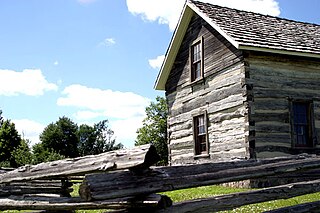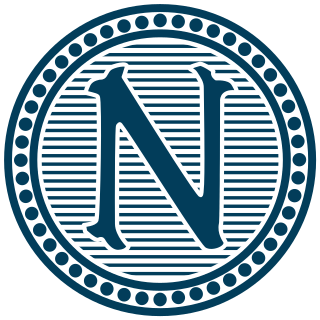Camilla Christine Hall was a member of the Symbionese Liberation Army (SLA), a small, far-left militant group that committed violent acts between 1973 and 1975. They assassinated Marcus Foster, Superintendent of the Oakland Public Schools and the first black superintendent of any major school system, kidnapped heiress Patty Hearst, and committed armed robbery of banks.

The Nobel Prizes are five separate prizes awarded to those who, during the preceding year, have conferred the greatest benefit to humankind, as established by the 1895 will of Swedish chemist, engineer, and industrialist Alfred Nobel, in the year before he died. Prizes were first awarded in 1901 by the Nobel Foundation. Nobel's will indicated that the awards should be granted in the fields of Physics, Chemistry, Physiology or Medicine, Literature, and Peace. A sixth prize for Economic Sciences, endowed by Sweden's central bank, Sveriges Riksbank, and first presented in 1969, is also frequently included, as it is also administered by the Nobel Foundation. The Nobel Prizes are widely regarded as the most prestigious awards available in their respective fields.

St. Peter is a city and the county seat of Nicollet County, Minnesota United States. It is 10 miles north of the Mankato – North Mankato metropolitan area. The population was 12,066 at the 2020 census. It is home to Gustavus Adolphus College.

The Royal Academies are independent organizations, founded on Royal command, that act to promote the arts, culture, and science in Sweden. The Swedish Academy and Academy of Sciences are also responsible for the selection of Nobel Prize laureates in Literature, Physics, Chemistry, and the Prize in Economic Sciences. Also included in the Royal Academies are scientific societies that were granted Royal Charters.

Edward Calvin Kendall was an American biochemist. In 1950, Kendall was awarded the Nobel Prize for Physiology or Medicine along with Swiss chemist Tadeusz Reichstein and Mayo Clinic physician Philip S. Hench, for their work with the hormones of the adrenal glands. Kendall not only researched the adrenal glands, he also isolated thyroxine, a hormone of the thyroid gland and worked with the team that crystallized glutathione and identified its chemical structure.

Karl Gunnar Myrdal was a Swedish economist and sociologist. In 1974, he received the Nobel Memorial Prize in Economic Sciences along with Friedrich Hayek for "their pioneering work in the theory of money and economic fluctuations and for their penetrating analysis of the interdependence of economic, social and institutional phenomena." When his wife, Alva Myrdal, received the Nobel Peace Prize in 1982, they became the fourth ever married couple to have won Nobel Prizes, and the first and only to win independent of each other.

Gustavus Adolphus College is a private liberal arts college in St. Peter, Minnesota, United States. It was founded in 1862 by Swedish Americans led by Eric Norelius and is affiliated with the Evangelical Lutheran Church in America. Gustavus was named for Gustavus Adolphus, the King of Sweden from 1611 to 1632. Its residential campus includes a 125-acre arboretum.

Eric Norelius was a Swedish-American Lutheran minister, church leader, and author.

The Arboretum at Gustavus Adolphus College, also known as TheArboretum at Gustavus or colloquially as The Arb, is on the campus of Gustavus Adolphus College in Saint Peter, Minnesota, United States. It contains a number of botanical gardens and a 125 acre arboretum with its first trees planted as small seedlings in 1973 on agricultural land. The arboretum was formerly named for Carl Linnaeus, a Swedish botanist, from 1988 to 2021.

The Nobel Foundation is a private institution founded on 29 June 1900 to manage the finances and administration of the Nobel Prizes. The foundation is based on the last will of Alfred Nobel, the inventor of dynamite.

Paul Theodore Granlund was an American sculptor. His creative career spanned more than 50 years and more than 650 different works. Most of his work is figurative and made from bronze. His patrons included colleges, hospitals, Lutheran churches, and other institutions.

Steve Heitzeg is an American composer whose works include compositions for orchestra, chorus, chamber ensemble, ballet, and film.

Roosevelt High School, or simply Roosevelt, is a public school located in the Standish neighborhood of Minneapolis, Minnesota, United States. A part of the Minneapolis Public Schools, it is named after 26th United States President Theodore Roosevelt. Athletic and other competition teams from the school are nicknamed the Teddies. Roosevelt has been an International Baccalaureate World School since March 2010, and offers the Diploma Programme as well as the IB Career-related Certificate.

The Nobel Memorial Prize in Economic Sciences, officially the Sveriges Riksbank Prize in Economic Sciences in Memory of Alfred Nobel, is an economics award funded by Sveriges Riksbank and administered by the Nobel Foundation.

Melva Lind graduated from the University of Minnesota with a Bachelor of Arts degree in 1923 and a Master of Arts degree in 1943. She then received the French equivalent to a Master of Arts degree from the Université de Lyon in Lyon, France in 1926. She went on to attend the Université de Paris en Sorbonne in Paris, where she earned her Doctorate in 1929. After which she attended MacPhail School of Music in Minneapolis, Minnesota where she earned a Master of Music in 1937. Over the years she continued her education with two diplomas from the Université de Clermont-Ferrand in France in 1923 and 1924 and a scholarship from the Conservatoire de Musique in Lyon, France in 1924–1925. She also studied around the world at the Universidad de Mexico in Mexico City in 1942, a study seminar in Germany during the summer of 1964, Greece in March 1973, Israel in July 1973, and the Institut de Langue et de Littérature Françaises at the Université de Rennes in France during the summers of 1970–1972.
Gloria June Tew was an American abstract sculptor known for her work in marble, bronze and steel. Tew's sculptures are found in institutions, museums, churches and private collections including, King Carl XVI Gustaf and Queen Silvia of Sweden. She resided in Minneapolis.

Kansas Lake Evangelical Lutheran Church was a small, rural church located near Butterfield, Minnesota, United States. Formed in 1871 by Swedish-Americans settling in the area, the church served the local population for 138 years before closing in 2009.

The Lutheran Minnesota Conference was one of the 13 conferences of the Augustana Evangelical Lutheran Synod. Formed by Swedish immigrants in the 1800s, it originally encompassed Minnesota, parts of North Dakota, South Dakota, Canada, and Wisconsin. Its size was substantially reduced years later when Alexandria, Fargo, and Red River Districts became the Red River Valley Conference in 1912, and the Alberta District and Canada Mission field became the Canada Conference in 1913. With the creation of the Lutheran Church in America (LCA) in 1962, it became known as the Minnesota Synod.

















